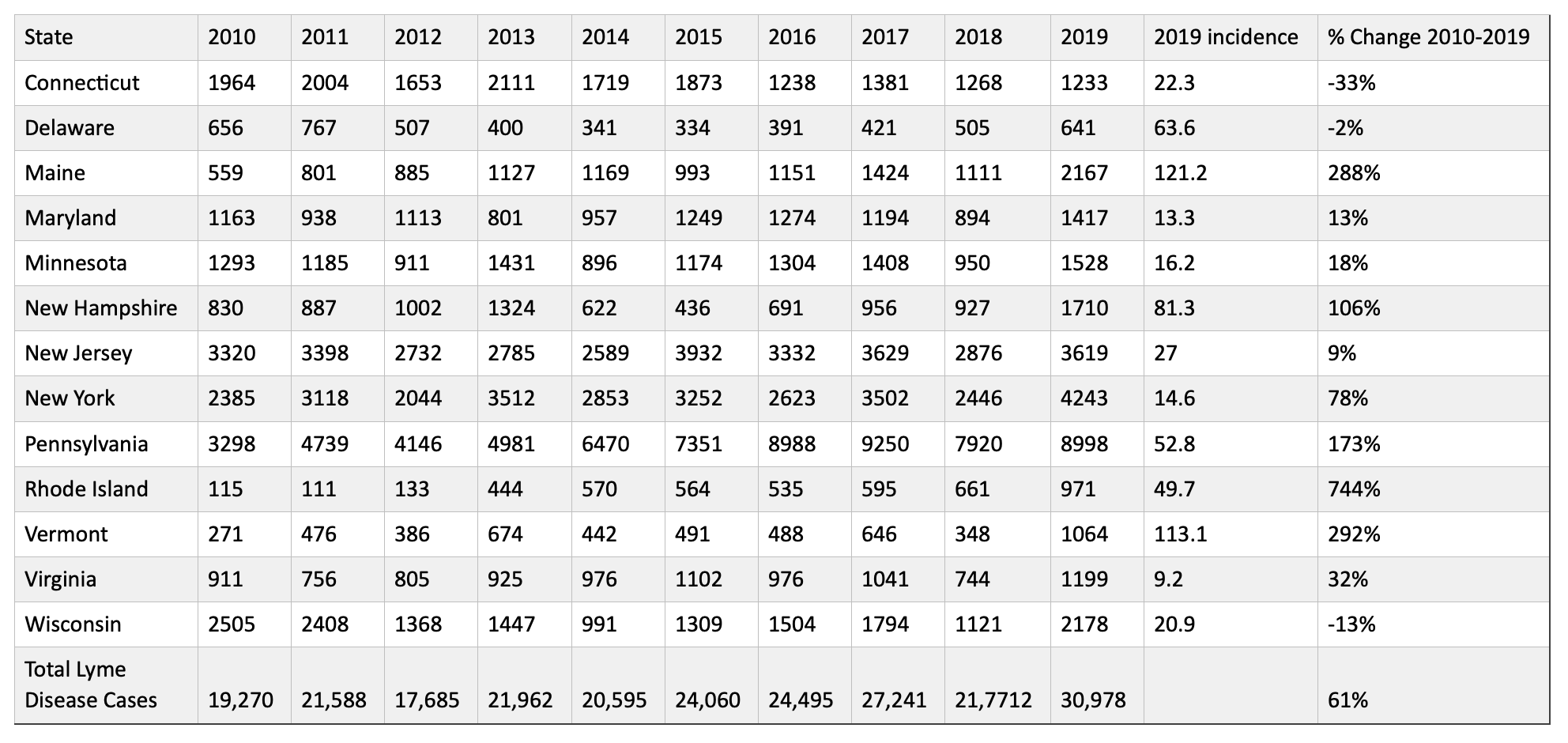New Data Shows Lyme Disease is on the Rise in VT
Over the last 10 years, Vermont has had the highest increase in incidents of Lyme disease of any state. Between 2010 and 2019, reported cases rose by 744%, and many cases go unreported. In 2019, 1064 cases were reported.
Now, as the Vermont Agency of Agriculture starts its spring tick survey, there’s more bad news: there may no longer be a beginning and end to tick season.
“It’s really a 12-month season now in Vermont,” said Patti Casey, the agency’s environmental surveillance program manager. Live ticks were found as early as February this year, she noted. The agency has spent the past year collecting data on when ticks are active throughout the year. Nationally, over 54% of the total Lyme disease cases are reported in June and July.
Of the 15 types of ticks identified in Vermont, six are known to transmit diseases. The blacklegged tick is the most common and transmits both Lyme disease and anaplasmosis, a bacterial disease. Blacklegged tick bites are most common in the spring and fall months and account for over 99% of reported tick bites, according to the Vermont Department of Health.
While the agriculture agency has not yet conducted its tick count, Casey said there is anecdotal evidence from hunters that this year’s numbers could be higher than in past years.
“They’re saying that they are seeing a lot of ticks here, more than usual,” she said.
There are many factors that have made it difficult for experts to make predictions about the severity of tick season, Casey said. One factor making tick season especially unpredictable is climate change. “We were never really comfortable making predictions, but climate change has thrown everything to the wind,” she said.

The University of Vermont’s Vermont Climate Assessment 2021 found the state’s average annual temperature has warmed by nearly 2°F, and precipitation has increased by a whopping 21% since 1900.
Warming temperatures have helped the disease spread north as ticks, who in the past may not have survived the winter, now appear to be thriving.
In fact, the Environmental Protection Agency tracks the incidence of Lyme disease as an indicator of climate change. The agency explains how the two are related: “Deer ticks are mostly active when temperatures are above 45˚F, and they thrive in areas with at least 85-percent humidity. Thus, warming temperatures associated with climate change are projected to increase the range of suitable tick habitat and are, therefore, one of multiple factors driving the observed spread of Lyme disease.”
Vermont’s public health veterinarian Natalie Kwit said the health department conducts tick bite surveillance in real time and does not make projections.
“As far as risk communication, we always know we’re going to have lots of ticks,” Kwit said.
Regardless of tick surveillance data, the health department remains consistent in its tick bite prevention messaging: use repellent containing at least 30% DEET, check your body for ticks and avoid tick habitats.
Each year, approximately 30,000 cases of Lyme disease are reported to the CDC by state health departments. This said, as stated by the CDC, “There is no way of knowing exactly how many people get Lyme disease. A recently released estimate based on insurance records suggests that each year approximately 476,000 Americans are diagnosed and treated for Lyme disease. This number is likely an overestimate of actual infections because patients are sometimes treated presumptively in medical practice.”
Since the early 2000s national and state health departments have been actively tracking Lyme disease cases. Statistics seem to show that Lyme disease continues to build each year and spread to new areas of the United States. What was once an illness seen in heavily wooded areas of the New England region has now spread South and West seemingly gaining a foothold in almost every state. States and regions near to the Northeast U.S. have the largest increase in cases, but now, even Midwestern states are reporting Lyme disease in their areas.
By Kathryn Field/VT Digger with additional reporting by George Bradley/Archer Education

